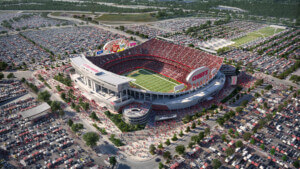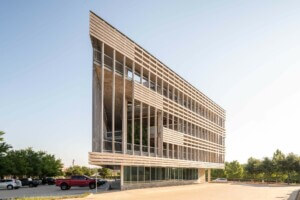Image credit: James Ewing/OTTO
When it comes to using computational tools to predict the energy and cost savings associated with high performance facade design, explained Paola Sanguinetti, Professor of Architecture at The University of Kansas (KU), AEC industry professionals often leave out a critical factor: the user. “My recent research explores how we can model the relationship between the comfort of the users and their perception of the space, and how that affects [environmental performance],” said Sanguinetti, who will participate in a presentation block on “Parametric Facade Optimization at All Scales” at September’s Facades+AM Kansas City symposium. “Depending on the kind of facade utilized, the way the user modifies the space really impacts the envelope and thus the overall performance of the building.”
Another research priority at KU, said Sanguinetti, has to do with modeling building performance at different scales, “from thermal bridges to how the facade [as a whole] aids in energy reduction.” The focus on scale, she said, is part of “a more holistic view of building environments,” which considers individual buildings as components of a broader network, such as a university campus or neighborhood. “How you can look at metrics for evaluating performance on the urban scale is very relevant for Kansas City,” given its smart city aims, said Sanguinetti.
According to Sanguinetti, Kansas City’s design and building communities exemplify an integrated approach to modeling and fabrication. “Zahner has pioneered the collaborative approach to design specification and manufacturing,” she said. The city’s sports architecture firms, too, “have a very strong collaboration with consultants.” At KU, the architecture program emphasizes “sustainability, but also understanding the entire process, and the importance of collaboration,” explained Sanguinetti. In 2014, for instance, the design/build program Studio 804 created The Forum, an addition to the university’s historical School of Architecture building Marvin Hall. Graduate students worked with Transsolar to evaluate the addition’s double skinned facade, including performing a survey of student use.
There is, of course, always room for improvement, said Sanguinetti. The local AEC industry could do a better job of sharing data on projects. In addition, “embedding risk analysis is important to help have a good conversation about building envelopes,” she said. “Any simulation is an estimation; again, the human variable is critical to understanding building performance.”
Meet Sanguinetti and other leading lights of Kansas City’s facades scene at Facades+AM September 15. Seating is extremely limited; register today!










